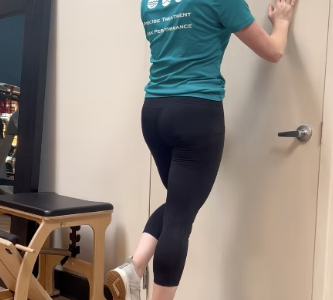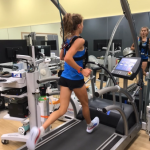Have you ever watched a runner effortlessly glide by and thought, “Their form is flawless”? I’ve seen both beautiful and less-than-ideal running techniques in my time, and one thing’s clear—good form makes a huge difference. The runners with excellent form seem almost weightless, as if they’re floating along the path. A solid running posture is essential not only for looking graceful but for preventing injury and enhancing performance.
Understanding Forward Lean
To achieve that effortless running form, your posture needs to be both relaxed and purposeful. If you’re tense or gripping too much, it can restrict your breathing, which in turn affects your strength and overall performance. Ensure that your rib cage stays aligned over your pelvis, and avoid tucking your buttocks under. This allows your diaphragm and pelvic floor to work together efficiently, which is crucial for proper movement.
Posture and forward lean go hand in hand—if one is off, the other won’t work correctly either. There are two primary perspectives on how to lean when running. One suggests that leaning from the hips is beneficial, as it reduces knee impact. However, in practice, this often leads to back and hip pain, higher nervous system tension, and could even prevent your glutes from firing properly.
The second viewpoint, which I support, is leaning from the ankles. From my clinical experience, this technique offers several benefits.
Why Lean from the Ankles?
- Landing Closer to Your Center of Mass (COM): Leaning from the ankles helps you land with your foot closer to your body’s center of mass, reducing the braking effect. If you experience pain in areas like the hamstring, back, or knee, this technique can help alleviate some of that discomfort by changing how your foot strikes the ground.
- Better Hip Extension: When you lean from your ankles, it enhances your ability to fully extend your hip, engaging the back part of your leg more effectively. Many runners tend to overuse the front part of their leg (anterior pendulum), but this technique encourages better balance and use of the posterior chain.
- Lower Back Relief: This form of lean reduces the strain on your lower back, as it encourages your hip to move properly through its full range of motion rather than overcompensating with your lower back.
- Improved Breathing and Core Engagement: With the correct forward lean, your diaphragm and pelvic floor are in better alignment, making it easier to breathe deeply and engage your core muscles.
How to Check Your Forward Lean
A simple way to test if you’re leaning from the hips or the ankles is by standing against a wall with your head, back, hips, and heels touching. Then, lean forward. If your buttocks hit the wall but your shoulders move forward, you’re likely leaning from the hips. If your shoulders and hips both move away from the wall together, then you’re probably leaning from the ankles.
Tips for Improving Your Forward Lean
- Focus on Posture and Breathing: Whether you’re standing, walking, or running, maintain a posture where your rib cage is aligned over your pelvis. Avoid any excessive arching or collapsing. Use your diaphragm to breathe deeply.
- Strengthen Your Posterior Chain: Incorporate exercises that target your hamstrings, glutes, lower back, and calves to build strength in the muscles that support proper lean and posture.
- Stretch Your Anterior Chain: Stretching your hip flexors and quadriceps will help balance the tightness that can develop from running and improve your range of motion.
- Practice Forward Lean Drills: Try exercises like butt kicks or the wall drill to practice and refine your forward lean technique.
Final Thoughts
When making adjustments to your running form, remember not to try changing too much at once. Focus on one change at a time so you can assess what works and what doesn’t. Initially, adjusting your running form may make things feel more difficult, but as your body adapts, you’ll start to feel the benefits. Stay consistent, and don’t hesitate to reach out if you have any questions.





